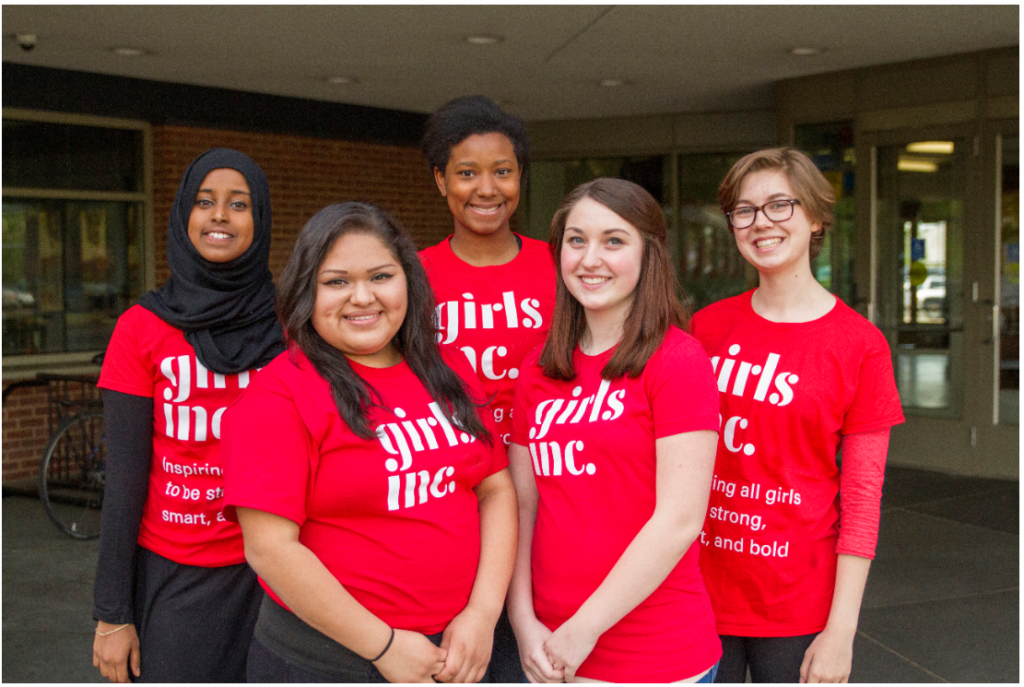We Know That No Two Girls Are Exactly Alike
Prioritizing Diversity, Equity, and Inclusion at Girls Inc.
No two communities are exactly alike just like no two girls are exactly alike. This is why Girls Inc. uses a Diversity, Equity, and Inclusion (DEI) lens in all organizational efforts. As a network of 79 affiliate organizations throughout the United States and Canada, we understand the importance of being aware of, and sensitive to, the needs of girls based on racial, ethnic, religious, cultural, and other demographics by which they self identify.
Quality and effective service to one’s service population is grounded on understanding and respecting the nuances, practices, and traditions they hold dear. This is especially crucial as they relate to or differ from your organizational culture and messaging.

Community Responsiveness
As an organization, you first must have a pulse on the community. That means understanding who is represented, what their needs and priorities are, and other programs or services available to your target community. All of this is crucial as you commit staff and financial resources to ensure that you can meet people where they are.
For example, Girls Inc. affiliates won’t go into a community with plans to implement financial literacy programming when the community might be dealing with the major impacts of immigration or a natural disaster. In such cases, the organization might partner with other agencies to present an immigration informational session with experts in that field. Another approach could be to gather resources to provide a food pantry and toiletries to those in need.
Charting a Unique Course for Girls
A DEI lens allows Girls Inc. staff who work with girls to keep in mind their uniqueness in all efforts. That first goes for when planning programs. It also means we are strategic in forging and maintaining partnerships that will enhance girls’ experiences. It also means building and cultivating trusting relationships with families and community stakeholders.
Organizational Mainstay
The same DEI lens impacts staff and leaders who don’t work directly with girls. Our team is informed around key issues and needs when writing grants. It informs the work we do with funders. We consider DEI when recruiting, hiring and onboarding staff, volunteers, and board members. We’re committed to fostering an environment where girls — and everyone who is part of the organization — can bring their authentic selves to Girls Inc.
Our focus is on continuously educating our network and becoming more culturally competent to effectively serve diverse girls. To that end, we use tools such as the Cultural Competency Continuum* among others. This tool empowers individuals to take ownership of their DEI journey. First individuals assess where they currently are on the continuum. From there, an individual sets goals for where they want to be. We meet these goals through ongoing learning and heightening our sensitivity to DEI issues. The ultimate goal is for every Girls Inc. stakeholder to apply a cultural competence lens to all aspects of their work with, and on behalf of, girls. We create such learning opportunities through internal and external webinars, conference sessions, and sharing relevant resources.
A Girls Inc. Journey
For us, the DEI journey is an ongoing commitment in all areas. It is a cornerstone for us in programming, advocacy, and research and evaluation. At Girls Inc. we have dedicated a national staff role to DEI. We have put in place a national and affiliate staff council and dedicated partnerships. We have also hired a consultant to support the next phase of this critical work for us as an organization. This is all to further and stay true to our mission of “inspiring all girls to be strong, smart, and bold.”
*About the Cultural Competence Continuum: Cultural competence represents the policies and practices of an organization, or the values and behaviors of an individual, and this enables an agency or person to interact effectively in a culturally diverse environment. Cultural competence is reflected in the way an organization treats its employees, its clients, and its community. Cultural competence is one of the six points on the continuum that ranges from Cultural Destructiveness to Cultural Proficiency. For more information on the Cultural Competency Continuum, click here.
